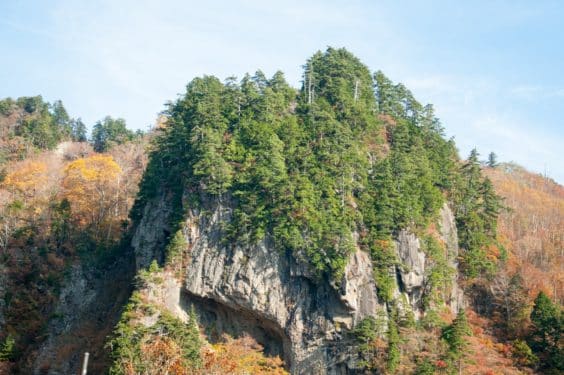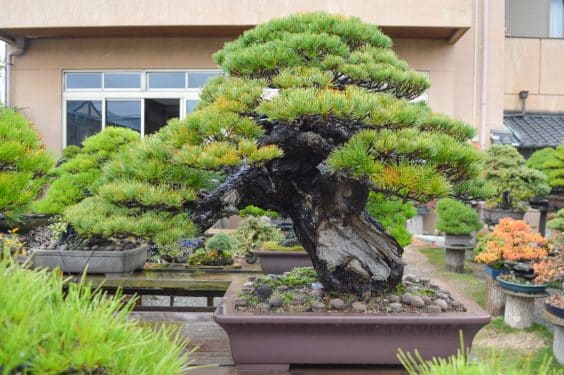As I’ve been visiting different bonsai clubs this year, I’ve had the opportunity to meet a lot of enthusiasts who are relatively new to bonsai. This has led me to think about the tips, techniques and areas of study that would be relevant for someone starting out in bonsai.
What I’ve come up with is a list of ten things for beginners to work on.
Nine are easy; one is hard. All ten require work.
The idea is to provide a starting point for anyone who wants to create beautiful bonsai or come to a workshop prepared to learn more. With this knowledge, you can keep your trees healthy for years.
Over the next few weeks, I’ll cover each item on the list, beginning with the most fundamental topics and progressing to more technical ones.
Do note that simply reading these posts will not make your trees better. Learning how to care for and work on your trees and then applying that knowledge will.
Identifying an appropriate environment for your bonsai
Last week a friend asked if he could grow white pines in San Francisco. It was a good question, and I didn’t have a good answer. I know that white pines that have been grafted onto black pines do well, and I know that only some white pine varieties do well in the Bay Area – possibly because we lack the cold temperatures that trigger winter dormancy. What I didn’t know is anyone with a lot of experience growing white pines in San Francisco.
White pine bonsai at Taisho-en
This led me to do some research about where white pines thrive – in general, up in the mountains where winter is cold.
White pines growing on a rock outcropping in Japan
I also called and wrote several people that lived in or worked on bonsai in San Francisco to see if they had experience with the variety.
The short answer is that I’ve heard mixed reviews about whether white pines can grow well in San Francisco.
The point in sharing this story is that no matter how much bonsai know-how one has, it’s no good if one’s trees aren’t well suited to their environment.
How can you determine the best environment for your bonsai? That’s where the research comes in.
The easiest starting point is to check with a friend or nurseryman who has direct experience with the variety in your climate. Local bonsai clubs are an ideal resource for this.
Online searches can also yield great results. I frequently consult Wikipedia, commercial, and university websites when researching how and where plants grow. Bonsai and other plant-related forums are also worth consulting (ask.bonsaitonight.com is one example).
White pine in the workshop at Aichi-en
If you’re not already familiar with the USDA Plant Hardiness Zone Map, now’s a great time to become acquainted as many plant resources refer to these zones.
One note of caution about the zone map – potted plants may not be as hardy as their counterparts growing in the ground. Because bonsai grow in containers, the roots are often exposed to much colder temperatures than they would be were they planted in the ground.
Once you’ve determined whether or not a given tree is a good fit for your climate, it’s important to determine how much sun it needs and how much exposure to wind it can tolerate.
Most of my conifers grow year-round in full sun. In summer, I use 30% shade cloth to shelter deciduous varieties like stewartia and Japanese maple.
I’ve come to this approach through years of experiments and consultation with local bonsai enthusiasts, yet I still move trees around the garden every year in an effort to provide the best conditions for each tree.
White pine in the garden at Daiju-en
That’s it for the first item on the list: how to identify an appropriate environment for your bonsai. It’s not hard work, but finding answer to this question can require some effort. Most items on the list will be similar in this regard.
Next up: How to evaluate water needs
(Article updated 12/7/16 in light of Brian Shindler’s comment that white pines haven’t done well in San Francisco. The original version suggested that white pines could grow, albeit slowly, in San Francisco.)
Subscribe to Bonsai Tonight
New Posts Delivered Every Tuesday and Friday




Zack Clayton says
A corollary to this should be: When reading about care and timing of activities for your tree, check to see where the author lives. A time table for Oregon WILL NOT work for trees in Ohio. Find out what the climate and equivalent growth cycle is between the author and your location.
Several members of our club have learned this the hard way.
Jonas Dupuich says
Great point Zack – I try to follow seasonal cues rather than calendar cues whenever possible.
Brian Schindler says
Jonas,
In the western part of San Francisco I have not been successful growing white pines. The first tree that I had (a beautiful imported white pine grafted on black pine root stock) slowly dwindled over a period of 20 years and eventually died. A second tree was showing a similar pattern, with loss of vigor and branch die back. I gave this tree to a bonsai enthusiast who lives where there are much colder winters. It seems to be doing much better. The take home for me is, I would tend to listen to people who tell you that a species may be problematic in your area. If you decide to proceed, carefully follow how vigorous the tree is growing.
Jonas Dupuich says
Thanks Brian! I just updated the article to reflect your experience with white pines.
Gonzalo says
hi Jonas I hope you enjoy Sacramento’s convention.
we had lunch together at the hotel bar
I enjoy your work shop.
S.O. says
Honestly, the pines from Taisho-en and Daiju-en shown above do not look very healthy to me. But maybe that was the point in using those particular pictures for this post. This year I lost a JWP myself and I just couldn’t figure out why. I kept it relatively warm in the winter, so there’s a real clue to what could have been the problem. Thank you all for that. Also, i feel it should be mentioned when it comes to the right care for JWPs, that they need a lot of iron in order to thrive. So knowing or not knowing this could be another reason why some JWPs do well in a certain area while others do not.
Jonas Dupuich says
Thanks, S.O. – that’s a good tip about the iron, will give it a try. One reason the pines in the photos don’t look their best is that the pics were taken in February and November, respectively. White pines in cold climates can turn yellow and even brownish when its cold out.